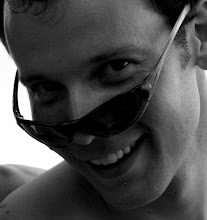I finally found an opportunity to climb Right Wing yesterday, with my friend Jacqui. Let me start with the most important point: Oh My Goodness! P2, the bolted corner, was wet but the water wasn't a big deal. Jacqui did some mix free and aid past the bolts (+ a blue metolius) and found it to be a pitch easily frigged. I followed it and found the moves to be in the 10b/c range with the exception of the move past the 3rd bolt, which may be harder.
Then the "Filibuster". To put it simply, I got served.
Even after 2 weeks of dry weather, the bottom 15 m were wet. I suspect that snow melt run-off is a problem for this route. The climbing was unrelenting in the mid-10 range. Get a piece in, suss the moves, layback for 10 feet, NO REST, look for gear while hanging onto a 5.10 move, repeat. Then the squeeze chimney, then the steep hands. Then 40m up from the belay, even with a set of doubles and even triples in some sizes of cams, I was out of gear. I built a hanging belay and brought Jacqui up. The last 20m to the chains were easier (5.9/10a) but required the same sort of gear that I needed below so I'm happy with my decision to break it up.
"What's Left". Holy moly! A 15m corner that overhangs 3m. Getting up to the flake has a tricky/burly move or two. But then the flake: stuff in the 4.5, undercling up, kneebar, reach for the top, pull up, then throw a leg over it and straddle. Once back in the corner, a #5 camalot will then go in. But in the midst of all this monkey business, there's no gear to speak of. The final moves to the chains are burly too (overhung laybacking).
Take-away messages:
(1) Wetness is a problem in spring;
(2) The Filibuster is a pitch perhaps unparalleled in Squamish in the 5.10 range. The closest analogue is probably the 5.11a final pitch to the Truck Stop on Freeway.
(3) I'm not ready to confirm the grades of any of the pitches on Right Wing. I believe that the ones posted on the topo (they are the historic grades) may be sandbagged. I await feedback on that.



















